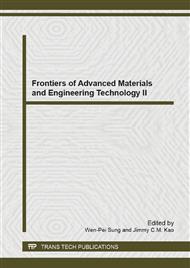p.1017
p.1022
p.1027
p.1032
p.1037
p.1041
p.1046
p.1050
p.1057
Two-Wheeled Self-Balancing Robot Systems Using Fuzzy Immune Algorithm
Abstract:
For two-wheeled self-balancing robot nonlinear model uncertainties and other characteristics, the design of fuzzy immune PD controller and a simulation study. The simulation results show that the control system than the conventional fuzzy PD controller with a small overshoot, adjust the time is short, anti-interference ability, etc., applicable to the mathematical model and the parameter change is difficult to determine two-wheeled self-balancing robot control system.
Info:
Periodical:
Pages:
1037-1040
Citation:
Online since:
April 2014
Authors:
Price:
Сopyright:
© 2014 Trans Tech Publications Ltd. All Rights Reserved
Share:
Citation:


